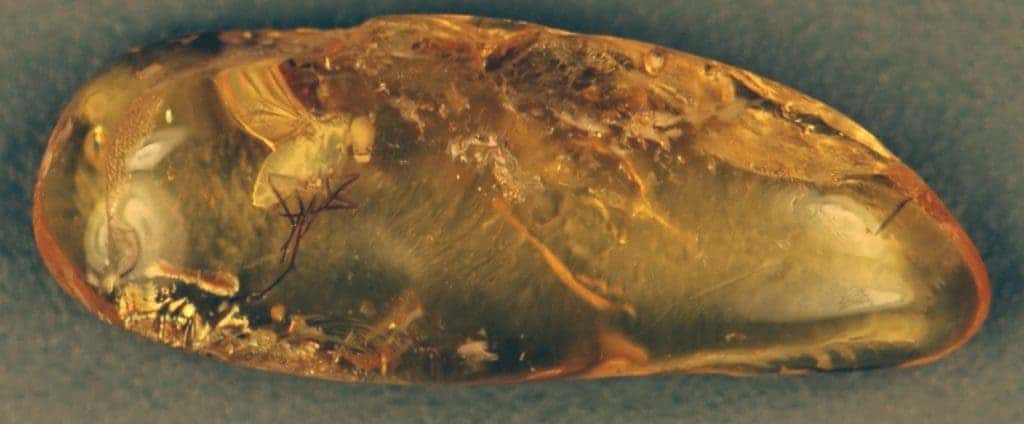
Image via flickr user James St. John
Amber is the fossilized from of tree resins. While fresh and viscous, it often gulps up pollen, plant material and even insects — such as this Diptera brachycera.
The bug was discovered in the amber formations of Yantarnyi, western Russia, meaning it lived in the Lutetian (41.3-47.8 million years ago) stage of the Middle Eocene. The milky-white film that forms around the insect is decay coating, a good indicator of genuine Baltic amber.
Along with Diptera, the amber incorporated a lot of tiny things known as stellate trichomes — the fuzzy, spiny object in the left of the photo for example. They’re basically small pieces of ancient oaks, such as epidermal hairs on flowers or leaf buds that they shed and got caught in the resin.
Diptera specimens are still alive and kickin’ today, and some of them are getting coated in amber as we speak! A nice reminder that fossils are still being formed for future paleontologists to uncover.

Image via flickr user James St. John


